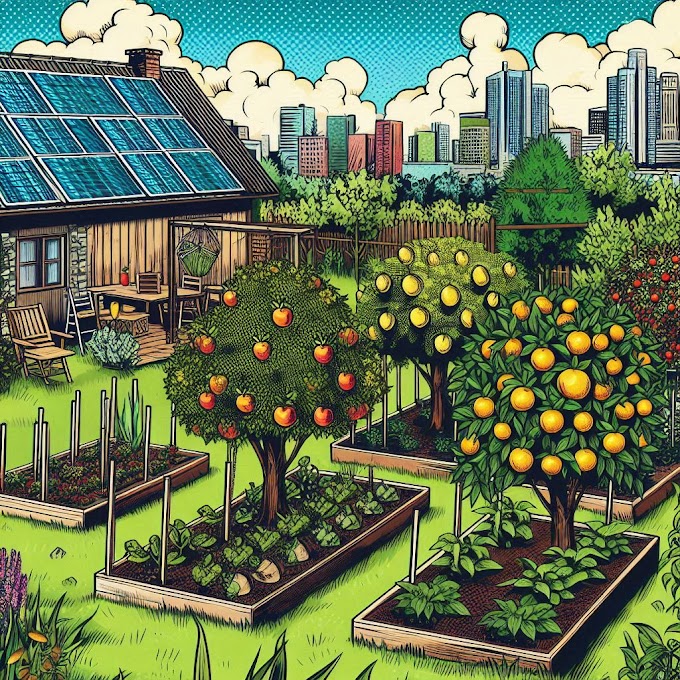Top Survival Foods to Grow in Your Garden: A Complete Guide
When it comes to survival gardening, choosing the right crops is key. Some foods not only provide essential nutrients but are also easy to grow, versatile in the kitchen, and store well. Here’s a simple detailed guide on specific survival foods you should prioritize in your garden.
1. Growing Sweet Potatoes
Why Grow Them?
Sweet potatoes are nutrient powerhouses packed with complex carbohydrates, fiber, vitamins A and C, and essential minerals. They are drought-tolerant and thrive in various climates.
When to Plant:
Plant in late spring once the soil has warmed to at least 60°F.
Where to Grow:
Sweet potatoes prefer full sun and loose, well-drained soil.
How to Grow:
Start with slips (rooted cuttings).
Plant them 12 inches apart in rows 3 feet apart.
Water regularly but avoid overwatering.
Benefits:
Highly nutritious and calorie-dense.
Stores for months in cool, dry conditions.
Can be eaten baked, mashed, fried, or added to soups.
Culinary Uses:
Sweet potatoes are incredibly versatile. Roast them, make sweet potato fries, or mash them for a comforting side dish.
Growing Tips:
Mulch heavily to retain soil moisture and suppress weeds. Harvest before the first frost for the best quality.
2. Growing Beans (Pole or Bush)
Why Grow Them?
Beans are an excellent source of protein and fiber. They enrich the soil with nitrogen, making them a valuable companion crop.
When to Plant:
Sow seeds in late spring to early summer when the soil temperature reaches 60°F.
Where to Grow:
Plant in sunny areas with well-drained soil. Use trellises for pole beans to save space.
How to Grow:
Sow seeds 1 inch deep and 3 inches apart.
Keep the soil evenly moist.
Provide support for climbing varieties.
Benefits:
Highly nutritious and shelf-stable when dried.
High yield per plant.
Ideal for soups, stews, and casseroles.
Culinary Uses:
Cook dried beans in soups, chili, or salads. Green beans can be steamed or sautéed as a side dish.
Growing Tips:
Harvest green beans regularly to encourage more production. Rotate planting locations yearly to prevent pests and diseases.
3. Growing Kale
Why Grow It?
Kale is a nutrient-dense leafy green rich in vitamins K, A, and C, along with calcium and antioxidants. It’s frost-resistant and grows year-round in mild climates.
When to Plant:
Plant in early spring or late summer for a fall harvest.
Where to Grow:
Choose a location with full sun to partial shade. Kale thrives in well-drained, fertile soil.
How to Grow:
Sow seeds ¼ inch deep and 8 inches apart.
Thin seedlings to 12 inches apart as they grow.
Water consistently to prevent bitterness.
Benefits:
Nutritional powerhouse that’s easy to grow.
Continues to produce leaves when harvested correctly.
Extremely versatile in cooking.
Culinary Uses:
Add kale to smoothies, salads, soups, or sauté it with garlic and olive oil for a quick side dish.
Growing Tips:
Mulch around plants to retain moisture and deter weeds. Harvest outer leaves first, leaving the center to regrow.
4. Growing Garlic
Why Grow It?
Garlic is a flavorful addition to meals and has medicinal properties, including boosting immunity and reducing inflammation.
When to Plant:
Plant in the fall, 4-6 weeks before the ground freezes.
Where to Grow:
Garlic thrives in full sun and loose, well-drained soil.
How to Grow:
Break garlic bulbs into individual cloves and plant them root-side down, 2 inches deep, and 6 inches apart.
Water regularly but avoid soggy soil.
Benefits:
Long storage life when cured properly.
Adds flavor and health benefits to your diet.
Culinary Uses:
Use garlic in everything from marinades and sauces to roasted vegetables and soups.
Growing Tips:
Remove flower stalks (scapes) to focus energy on bulb development. Harvest when leaves turn yellow and start to droop.
5. Growing Winter Squash (Butternut, Acorn, etc.)
Why Grow It?
Winter squash is rich in vitamins A and C, fiber, and complex carbohydrates. It stores exceptionally well, making it a reliable survival crop.
When to Plant:
Sow seeds in late spring to early summer after the last frost.
Where to Grow:
Plant in full sun with rich, well-drained soil.
How to Grow:
Sow seeds 1 inch deep and 3-4 feet apart.
Provide ample space for vines to spread.
Keep soil moist but not waterlogged.
Benefits:
Nutrient-rich and calorie-dense.
Long shelf life, often lasting through winter.
Culinary Uses:
Roast squash, use it in soups, or mash it for a hearty side dish. The seeds can also be roasted for a nutritious snack.
Growing Tips:
Keep an eye out for squash bugs and powdery mildew. Rotate crops annually to maintain soil health.
Each of these crops offers unique benefits, ensuring your survival garden is both productive and sustainable.
By diversifying your planting, you can create a robust food supply that meets both nutritional and culinary needs.












